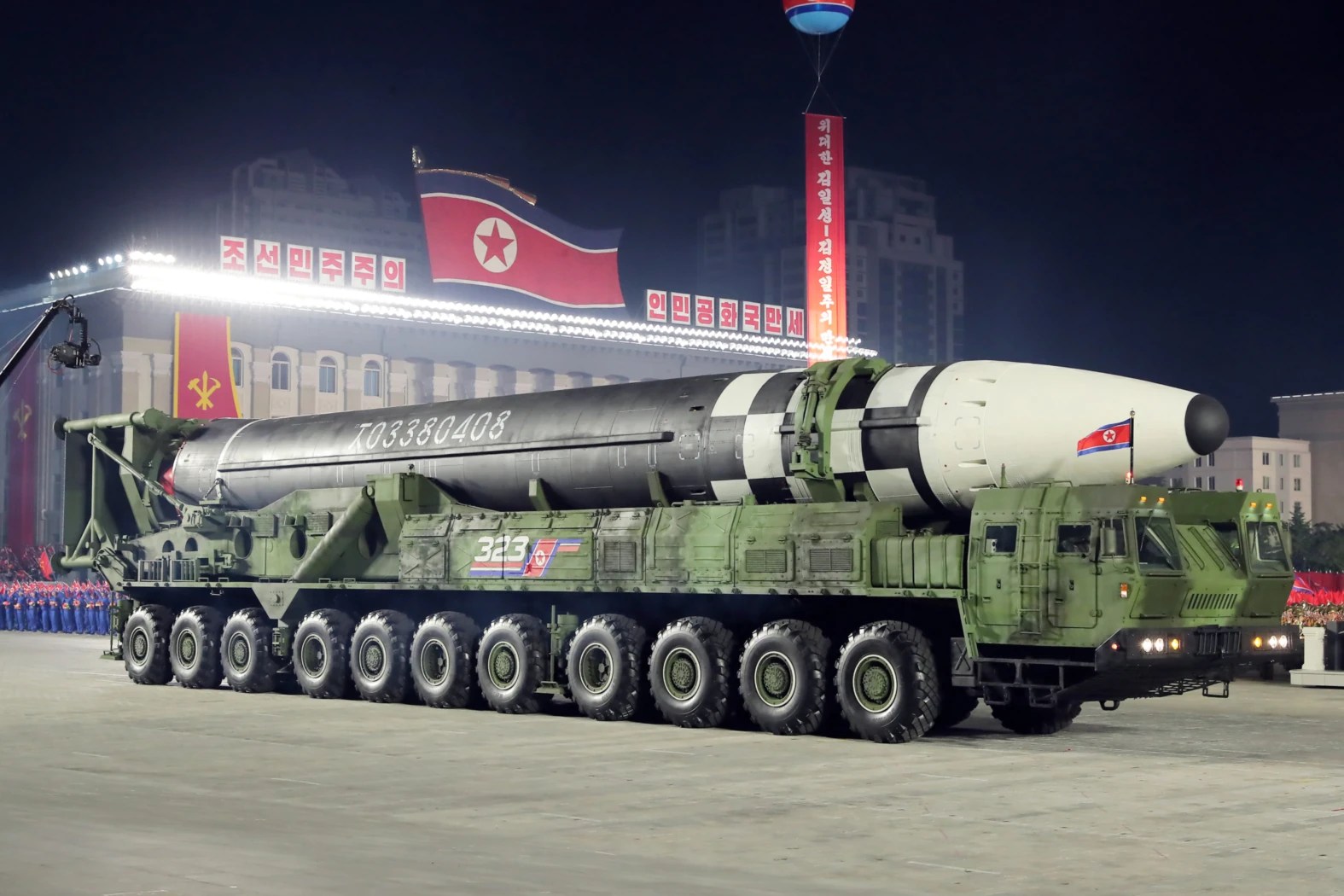China has built a new long-range, early-warning radar that can be used to detect ballistic missiles from thousands of miles away, probably giving it coverage of all of Japan.
The commercial satellite imagery from Maxar Technologies, published on Google Earth show a new Large Phased Array Radar (LAPR) has been built at a mountaintop site in Yiyuan County, Shangdong Province, around 70 miles southeast of provincial capital Jinan.
The new array radar is facing a northeasterly direction and was built sometime after November 2019. It can potentially provide China with early warning of ballistic missile launches from North and South Korea, most of Japan, where the US maintains its military bases and even parts of Russia’s Far East.
The first LPAR built at this site, about 2,300 feet above sea level, was completed sometime in 2013-2014 as per the historical imagery of Google Earth and it is located at 36°01′30″ N, 118°05′31″ E. The radar is oriented towards the South-Southeast, almost certainly to provide radar coverage of Taiwan.
:quality(70)/cloudfront-us-east-1.images.arcpublishing.com/mco/QEALTMHXCRDALG27S2UHOZTG7I.jpg)
China is also known to operate additional LPAR sites at Lin’an in Zhejiang Province and Heilongjiang Province. These sites enable early warning coverage of Japan, the Korean Peninsula and Taiwan from multiple angles.
The LPAR at Lin’an is an X-band active phased array and has a range of about 4,000 kilometers for a target of 10 square meters. The radar relays information to the Hongqi-19 interception system through the control system, so that the missile can launch and destroy the incoming target.
There is another LPAR site at Korla in Xinjiang Province which provides early warning coverage of India. The Korla radar base is located 980km from Karakoram Pass and is 3,800km from India’s southern tip.
While India’s ‘No First Use’ policy forbids an aggressive nuclear posture, reports by the Federation of American Scientists (FAS) suggest that India is developing nuclear capabilities to bring the entire Chinese mainland within its reach.

The quoted coverage of this Korla LPAR is also 4,000km in range and ±60° from the direction of fire. Therefore, it can cover more areas than the entire India.
In addition to providing a warning against ballistic missile launches, LPARs can also be used for satellite tracking and general space surveillance. Reports suggest that Korla LPAR has been used extensively during China’s trials of anti-satellite (ASAT) weapons and hypersonic glide weapons.
Chinese LPARs are said to be comparable in terms of capabilities with the American AN/FPS-115 radar found in the U.S. Pave Paws network which can reportedly detect targets with a radar cross-section of 10 square meters at a range of 3,000 nautical miles (5,600 km) and can be deflected up to 60 degrees from the array’s central boresight axis, allowing each array to cover an azimuth angle of 120 degrees.

Previously released photos of China’s LPARs show that the array is also sloped, similar to that of the AN/FPS-115 which is sloped at an angle of 20 degrees, allowing the beam to be directed at any elevation angle between 3 degrees and 85 degrees.
LPARs are an integral part of China’s missile warning and space tracking network which also includes a growing number of space-based sensors and a network of over-the-horizon radars. China’s Nanjing Research Institute of Electronics Technology is one of the premier organizations for LPAR development.
Chinese efforts on early warning capabilities began in the early 1960s and can be traced back to the Project 640 which was launched in 1964 to develop anti-missile systems under the orders of Mao Zedong, who declared at the time in response to concerns over nuclear threats, “If there is a spear, there must be a shield”
The first LPAR of China was Type 7010 which entered operation in 1974. It was a passive electronically scanned array radar, located at Huangyang Mountain in Hebei Province to provide Ballistic Missile Early Warning or BMEW of the Russian strategic forces to the Chinese Air Force.

Some unverified claims suggest that the 7010 radar was able to accurately predict the fall of the US Space Station Skylab, the launch point of a ballistic missile launched by the Soviet Union in the direction of the Pacific and the fall point of Soviet nuclear-powered satellite Kosmos 954 wreckage.
The Type 7010 radar laid the foundation of Chinese LPAR development and ever since, China has been investing massively in advancing its capabilities for strategic situational awareness so as to enhance its capability to undertake nuclear counterattacks and conventional operations.
- Written by Tanmay Kadam/EurAsian Times Desk
- Contact the author at etdesk@eurasiantimes.com
- Follow EurAsian Times on Google News




